
| Hazy days in Darjeeling |
|
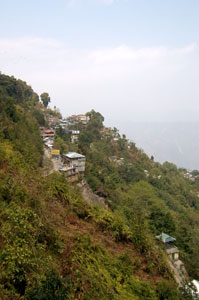 Himalaya foothills housing |
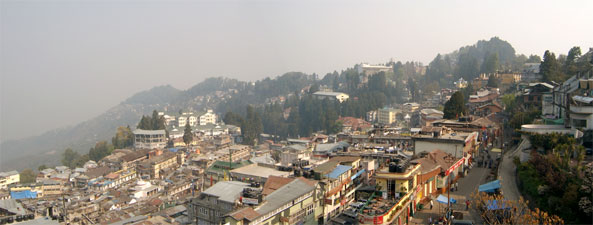 Haze over Darjeeling |
The sun shone weakly through the haze as we reached cosmopolitan Darjeeling, a melting pot of 100,000 people of diverse Himalayan and Indian cultures, straddling a ridge at 2100m. Our bed in the cosy Hotel Dekeling, high on the slopes of Darjeeling, was particularly inviting as we settled in for our first decent sleep in 42 hours. |
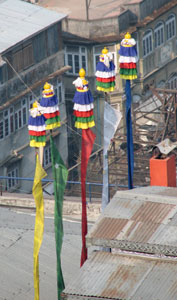 |
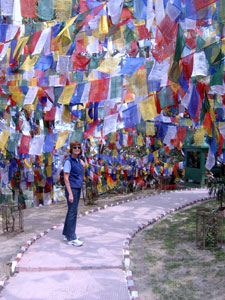 Beneath the prayer flags of Observation Hill |
We were woken by the sounds of Darjeeling - the constant tooting of car-horns, the characteristic rumble of diesel motors cranking up the narrow people-filled streets and the chatter and noise of a city on the verge of rupturing its infrastructure, but vibrant with life. After a late breakfast, we spent the day getting a feel for this city of contrasts, where the new and the crumbling sit side by side, concrete buildings crowned by black plastic water tanks on every roof and a spaghetti of pipes running off in every direction. Concrete and diesel are the flesh and blood of this part of the world - without either it would not function. Colourful market stalls line the narrow streets and almost anything can be bought at a myriad of tiny shops, while buddhist and hindu temples and shrines sit side by side in a glorious melange of colours and scents. We liked it. |
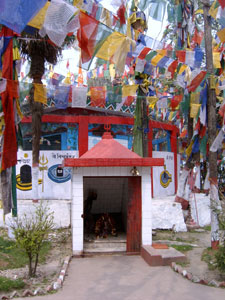 Mahakal Temple - Observation Hill |
|
Later that evening we caught up with our fellow trekkers, George from Sydney, and Chris and Hazel from England, getting to know each other over beers and dinner. A ferocious thunderstorm that night demonstrated why Darjeeling was thus named; from the Tibetan words "dorje" thunderclap and "ling" - place. The diesel generators came out in force as the storm knocked out the electricity grid, and Darjeeling rolled on. Despite our hopes that the storm would clear the air, the Darjeeling haze persisted, hiding the mountain views for which this town is famous.
The next day, Wangchuk took us all on a tour of the town. It was good to stretch our legs again and get a feel for these steep "foothills", taller than anything back home. Notwithstanding a dose of the Darjeeling dash as our gut floras adapted to a new diet, we were ready for our first trek. |
|
|